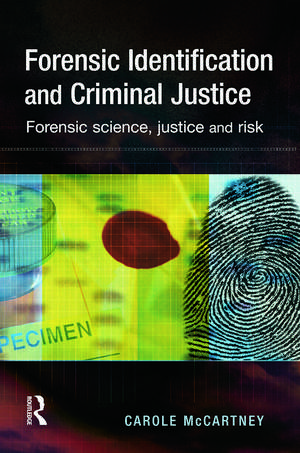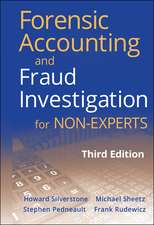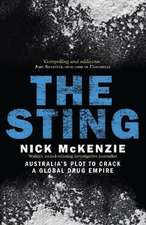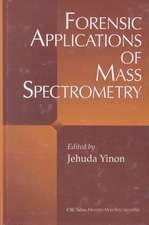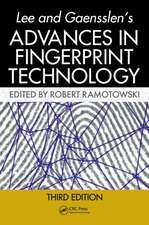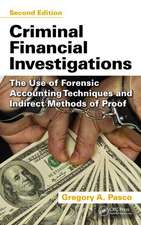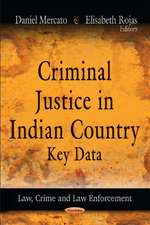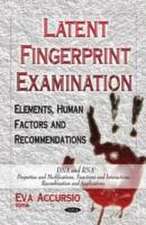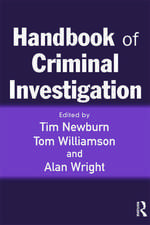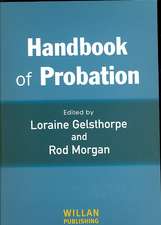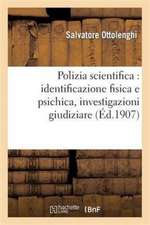Forensic Identification and Criminal Justice
Autor Carole McCartneyen Limba Engleză Paperback – 17 mai 2012
This book uncovers the way in which this new reliance on forensic technologies has gained a foothold within the criminal justice system, and the risks and dangers that this can pose. The National DNA Database provides a particular focus of attention. The author seeks to move beyond an approach that has seen forensic DNA profiling as error free, situating her analysis within broader risk discourses.
| Toate formatele și edițiile | Preț | Express |
|---|---|---|
| Paperback (1) | 384.04 lei 3-5 săpt. | +22.49 lei 7-11 zile |
| Taylor & Francis – 17 mai 2012 | 384.04 lei 3-5 săpt. | +22.49 lei 7-11 zile |
| Hardback (1) | 1168.06 lei 6-8 săpt. | |
| Taylor & Francis – iul 2006 | 1168.06 lei 6-8 săpt. |
Preț: 384.04 lei
Preț vechi: 417.43 lei
-8% Nou
Puncte Express: 576
Preț estimativ în valută:
73.48€ • 76.73$ • 60.68£
73.48€ • 76.73$ • 60.68£
Carte disponibilă
Livrare economică 25 martie-08 aprilie
Livrare express 11-15 martie pentru 32.48 lei
Preluare comenzi: 021 569.72.76
Specificații
ISBN-13: 9780415628327
ISBN-10: 0415628326
Pagini: 272
Dimensiuni: 156 x 234 x 14 mm
Greutate: 0.5 kg
Ediția:1
Editura: Taylor & Francis
Colecția Willan
Locul publicării:Oxford, United Kingdom
ISBN-10: 0415628326
Pagini: 272
Dimensiuni: 156 x 234 x 14 mm
Greutate: 0.5 kg
Ediția:1
Editura: Taylor & Francis
Colecția Willan
Locul publicării:Oxford, United Kingdom
Public țintă
Postgraduate and UndergraduateCuprins
Introduction 1. Forensic identification: the legal framework. Police investigations and forensic identity evidence. Fingerprints and DNA sampling: the legal framework 2. Forensic identification: the criminal investigation. DNA and police investigations. The DNA Expansion Programme. DNA and criminal detection rates. Forensic science and criminal investigation: a case for caution?. Conclusion: forensic identification and the criminal process 3. Forensic identification: the criminal trial. The criminal trial: fairness or truth?. Identity 'matches': acceptance of fingerprint and DNA evidence. The criminal trial: certainty and rectitude. Conclusion: forensic identification and the criminal trial. Forensic identification and criminal justice 4. The development of forensic identity databases. The development of forensic identity databases. Fingerprint databasing. A sceptical approach to forensic identity databases. Forensic identity databases: some new risks. Forensic identity databases: current problems, future risks. Conclusion: the endangerment of innocence in the pursuit of security 5. Forensic identification in other jurisdictions. Europe Pan-European developments. Interpol USA Canada New Zealand and Australia. Conclusion: England and Wales - leading the way? 6. The future of forensic identification: issues and prospects. Fingerprints and DNA in the 'fight against crime'. Future applications for forensic identification technologies. Forensic identification: human rights and civil liberties. Forensic identity databases: issues and prospects. The 'infallibility' of forensic identification. The information society: heading for 'information overload'?. Conclusion: Cause for optimism, pessimism, or scepticism?
Notă biografică
Carole McCartney is a Senior Lecturer in the School of Law, Leeds University. Her research interests include Australian justice, innocence projects, and DNA and criminal justice.
Recenzii
'DNA Technology represents one of the greatest scientific advancements of the last century. It has been truly phenomenal. Forensic Identification and Criminal Justice not only focuses on the development of DNA and other identification technologies and their uses within our criminal justice system, but also identifies the consideration that from scientific, legal and ethical perspectives total reliance on such evidence is not without risk. Such risk might arise as a result of the manipulation, misapplication or misunderstanding of the data in the courtroom. The book blends scientific knowledge and legal principles with philosophical concepts, particularly in relation to civil liberties and human rights. Importantly, it offers nothing that seriously undermines justifiable confidence in DNA evidence. The book provides a penetrating analysis of the subject and is a work for the shelves of force libraries.' − David Pickover, legal editor of Police Review
Descriere
This book uncovers the way in which this new reliance on forensic technologies has gained a foothold within the criminal justice system, and the risks and dangers that this can pose.
